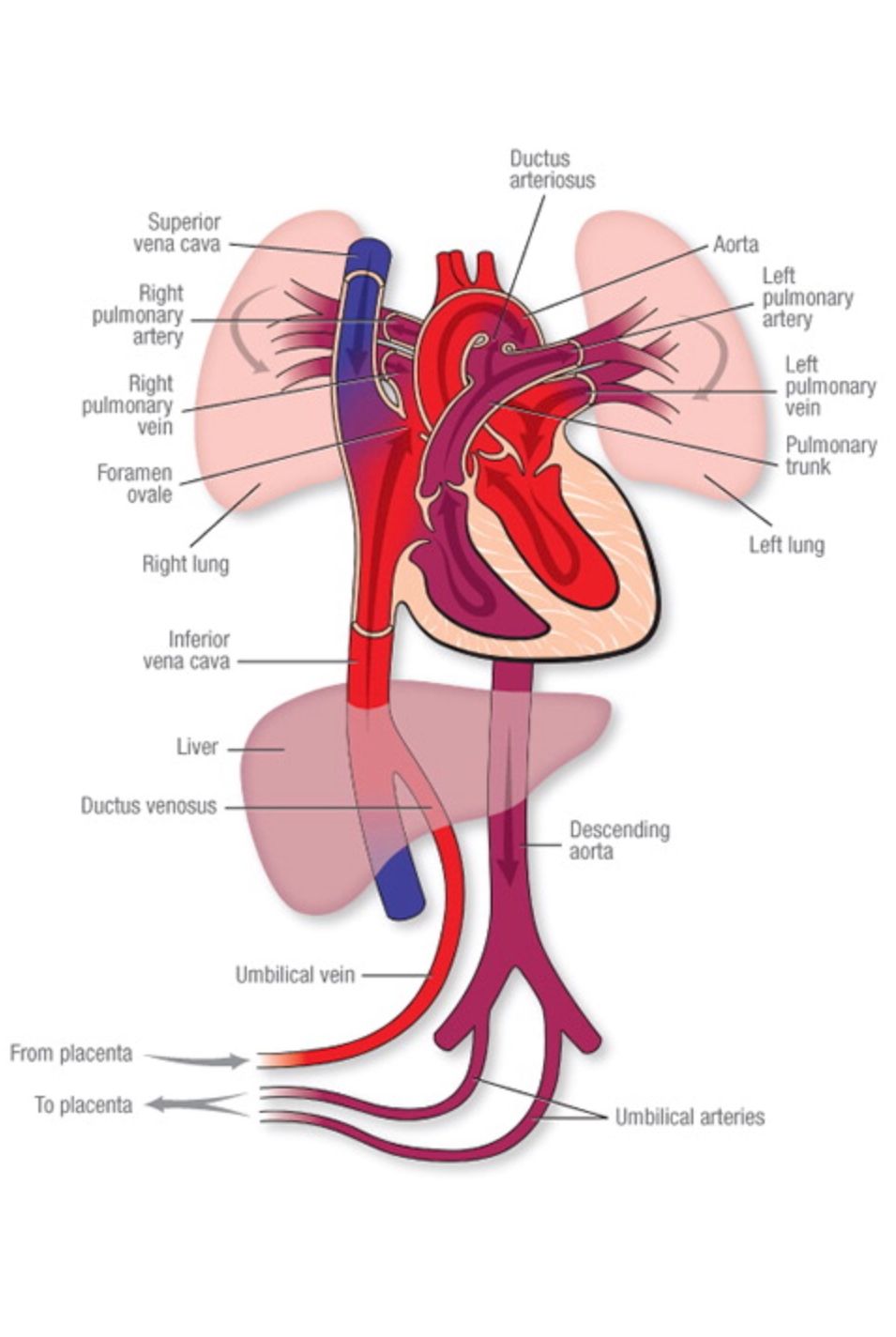
(Vienna, 13 June 2018) In the fetus, the blood vessel known as the ductus arteriosus or ductus Botalli bypasses blood from the lung artery to the aorta. A MedUni Vienna research group has now shown that this blood vessel remains open during the first few days of life to increase the pumping force of the left ventricle (which is less challenged before birth). This vessel then closes, having achieved its purpose.
Since lung respiration is not yet established in the unborn baby and oxygen is provided by the placenta, the right ventricle pumps only a maximum of 20% of its oxygen-poor blood into the lung artery, the rest passes via the ductus Botalli into the descending aorta and to the lower body, approximately 30% of this blood is sent to the placenta via the umbilical arteries. The oxygen-rich blood from the placenta reaches the right atrium via the umbilical vein. Most of it flows via the open foramen ovale into the left atrium, the left ventricle and finally into the ascending aorta and the vessels of the head and arms, thereby supplying both the coronary vessels and the baby's brain with oxygen.With the onset of respiration after birth, the right ventricle pumps its oxygen-poor blood into the lung vessels. Oxygen exchange takes place in the inflated lungs, due to a reduction in lung pressure, the blood flow route in the ductus Botalli reverses and now goes from the aorta to the lung artery. These circulatory changes – the transition from prenatal to postnatal circulation – are part of a very complex process, which takes place in a "programmed" manner. The ductus arteriosus constricts and closes, usually only after the first few days of life. Supportive effect in preterm infants clearly measurableSince the lungs of a preterm infant are often immature, the described transition is often delayed and thus, the ductus Botalli may remain open longer. The immature left ventricle, which primarily pumped blood into the upper body before birth, now faces the challenge to pump its blood into the whole body. In preterm infants, in whom the ductus Botalli constricted as "programmed", an improvement in the pumping performance of the immature left ventricle could be demonstrated. The failure of the "programmed" closure of the ductus however led to a consistently lower pumping force. This led the authors to conclude that the ductus arteriosus Botalli, by remaining open in the days following birth, "facilitates" the transition of the left ventricle. This occurs by the reversed blood flow route into the lung artery and thus, a greater cardiac "preload", which, via the so-called Frank Starling mechanism, results in an enhanced cardiac pumping force. In fact, the ductus arteriosus not only trains the left ventricle but also supports the lung circulation following birth. "The study conducted by Sigrid Baumgartner has shown us why the ductus Botalli remains open during the first days of life," explains lead investigator Ulrike Salzer-Muhar from the Division of Paediatric Cardiology of the Department of Pediatrics and Adolescent Medicine, "the programmed circulatory transition after birth is intended to ensure that we have a good start in life."Use of functional echocardiographyThe Department of Pediatrics and Adolescent Medicine of MedUni Vienna/Vienna General Hospital (Division of Neonatology, Intensive Care Medicine and Neuropediatrics) uses echocardiography to monitor cardiovascular function in premature babies. This cardiac ultrasound programme was set up by Ulrike Salzer-Muhar in 2009. This neonatology-cardiology working group recently used a pump model to analyse the pump function of the left ventricle in preterm infants during their first four weeks of life.Lead author of this publication, Sigrid Baumgartner, who works as a neonatology consultant, won the "Best Original Science Platform Presentation" prize at the NeoHemodynamics 2018 symposium in Toronto for her research results.
Service: Pediatric Research
Left ventricular pumping during the transition-adaptation sequence in preterm infants: impact of the patent ductus arteriosus. Baumgartner S, Olischar M, Wald M, Werther T, Berger A, Waldhör T, Fischer G, Salzer-Muhar U. Pediatr Res. 2018 Apr 11. doi: 10.1038/pr.2018.22. [Epub ahead of print]